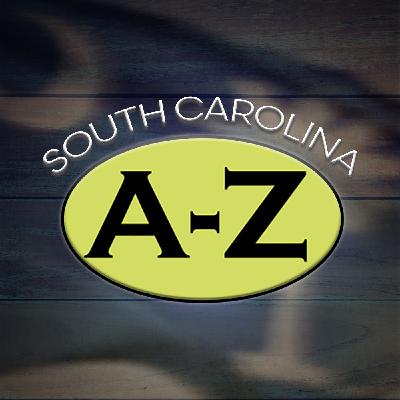Discover South Carolina from A to Z
South Carolina from A to Z

South Carolina from A to Z
Author: Walter Edgar
Subscribed: 81Played: 3,106Subscribe
Share
© 2025 SC ETV Commission
Description
Historian and author Walter Edgar mines the riches of the South Carolina Encyclopedia to bring you South Carolina from A to Z. South Carolina from A to Z is a production of South Carolina Public Radio in partnership with the University of South Carolina Press and SC Humanities.
1044 Episodes
Reverse
“H” is for Hunter, John (d. 1802). Congressman, U.S. senator.
“G” is for Grimké, Archibald Henry (1849-1930). Activist, scholar.
“C” is for Coker, David Robert (1870-1938). Businessman, plant breeder, philanthropist.
“C” is for Coker, Charles Westfield (1879-1931). Businessman, philanthropist, social reformer.
“C” is for Cofitachiqui. Cofitachiqui is the name of a sixteenth-and seventeenth-century Native American chiefdom as well as one of the principal towns of that chiefdom.
“B” is for Boyce, James Pettigru (1827-1888). Minister, educator.
In his book Grant’s Enforcer: Taking Down the Klan Guy Gugliota offers a gripping story of the early years after the Civil War and the campaign led by President Ulysses S. Grant’s attorney general Amos T. Akerman to destroy the Ku Klux Klan. Akerman, a former Georgia slaveholder and the only Southerner to serve in a Reconstruction cabinet, was the first federal lawman to propose using the Fourteenth Amendment to prosecute civil rights violations.Gugliotta uses newspapers, documents, and first-person stories, including thousands of pages of testimony under oath taken by a Congressional joint committee tasked in 1871 to study the Ku Klux Klan, a breathtaking compilation of accounts by Ku Klux targets, their attackers, local and national politicians, public officials and private citizens. The result is a vivid portrait of the Reconstruction South through the career of this surprising man.Guy joins us in conversation this week to talk about how Grant and Akerman took down the Klan.
“W “is for Woodmason, Charles (ca.1720?). Clergyman.
“S” is for Smalls, Robert (1839-1915.) Legislator, congressman.
“R” is for Russell's Magazine (1857-1860). Russell's Magazine was the last of the southern antebellum literary magazines and arguably the best.
“P” is for Poppenheim, Mary Barnett (1866-1936) and Louisa Bouknight Poppenheim (1868-1957). Club women, social reformers.
“P “is for Pope, Thomas Harrington, Jr. (1913-1999). Attorney, legislator, historian.
“N” is for Nullification. The passage of the federal tariff law of 1828 signaled the rise of the nullification controversy in South Carolina. Led by John C. Calhoun a majority of South Carolinians eventually came to assert that a state had the right to nullify or veto federal laws and secede from the union.
“N” is for Nuclear power. The first time nuclear power was used to generate electricity in South Carolina was a small 17 megawatt experimental prototype by South Carolina Electric and Gas (and partners) at Parr from 1963 to 1967.
“C” is for Coastal plain. The coastal plain is South Carolina's largest landform region, forming two-thirds of the state and encompassing approximately 20,000 square miles.
“M” is for Morgané, Mary Elizabeth (1815-1903). Author, diarist.
“L” is for Ludwell, Phillip (1638-1723). Governor.
“H” is for Humphreys, Josephine (b.1945). Novelist.
“G” is for Gressette, Lawrence Marion (1902-1984). Legislator.
“D” is for Dutch Fork. The Dutch Fork lies in a fork between the Broad and Saluda Rivers that includes parts of the modern counties of Newberry, Lexington, and Richland.





